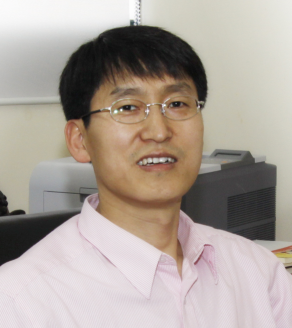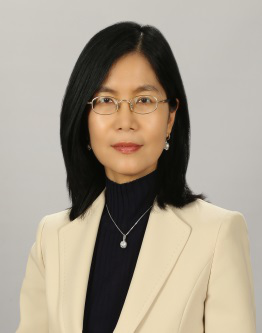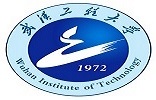2018 International Conference on Intelligent Computing
August 15-18
,2018
Wuhan,China
(http://www.ic-icc.cn/2018/index.htm)
 |
Kanghyun Jo Ph.D & Professor School of Electrical Engineering, University of Ulsan, Ulsan, Korea |
 |
Kyungsook Han Ph.D & Professor Department of Computer Engineering, Inha University, Incheon, Korea |
Computer Vision for Human Supportive Technology : An Autonomous Car Case
Kanghyun Jo
Ph.D & Professor
School of Electrical Engineering, University of Ulsan, Ulsan, Korea
Email: acejo@ulsan.ac.kr
Personal website: http://islab.ulsan.ac.kr

Abstract:Autonomous cars are just around corners as a new supportive technology for human life in the future. In the computer vision based or sensor-fusion methodology, it is so important to perform the human supportive technology development so that the experience regarding this task will be explained as an example with a real implementation associating with technological methods. While the feature based approaches mainly have been done before, it is much more addressed to use learning based approaches for this kind of tasks in using computer vision. In the presentation, the general approach and ideology will be discussed for the general scope of human supportive technology and a specific example.
Bio-Sketch:Kanghyun Jo is a professor at the School of Electrical Engineering, University of Ulsan, Ulsan, Korea. He had graduated and obtained the BS from Busan National University, MS and Ph.D from Osaka University, in 1989, 1993, and 1997, respectively. After experienced in ETRI (Electro-Telecommunication Research Center), in Korea as a post-doctor research fellow. He has served as the vice dean of e-Vehicle Graduate Institute during 2007-2009 and continuously the vice dean of College of Engineering during 2009-2011. He also had been working in Kyushu University and KIST (Korea Institute of Science and Technology) during 2005 to 2006, Oregon State University during 2008 and UC Riverside during 2013 to 2014 as a visiting scholar. He has been served as a director of many societies: ICROS (Institute of Control, Robotics and Systems, Korea), KMMS (Korean Multimedia Society), SICE (Society of Instrumentation and Control Engineers, Japan), as well as IEEE IES TC-HF(Technical Committee on Human Factors) Chair. He is the secretary of IEEE IES from this year after served as an AdCom member since 2012. He is currently serving as an (associate or guest) editor for a few renowned international journals, such as IJCAS (International Journal of Control, Automation and Systems), TCCI (Transactions on Computational Collective Intelligence), IEEE IES TII (Trans. on Industrial Informatics), etc.
He has been made a variety of contributions for managing and organizing conferences, workshops and other academic gatherings where holding chairs with the variety of international conferences: ICIC(International Conference on Intelligent Computing), ICCAS(International Conference on Control, Automation and Systems), FCV(International Workshops on Frontiers of Computer Vision), HSI(International Workshops on Human System Interactions) and ICCCI(International Conference on Computational Collective Intelligence) as a steering member. Until now, he had published more than a hundred technical papers with peer reviews.
Computational Approach to Finding Potential Aptamers for a Protein Target
Kyungsook Han
Ph.D & Professor
Department of Computer Engineering, Inha University, Incheon, Korea
Email: khan@inha.ac.kr
Personal website: http://bclab.inha.ac.kr.

Abstract:Aptamers are short nucleic acid (DNA or RNA) sequences that bind to a target molecule with high afinity and selectivity. Aptamers are generally identified by an in vitro process known as SELEX (systematic evolution of ligands by exponential enrichment). As a complement to the SELEX process, several computational methods have been proposed to find aptamers. However, many of these methods cannot be used in finding new aptamers for a target either because they are classifiers for determining whether given protein and nucleic acid sequences bind to each other or because they are limited to a specific target only. In this talk I will present two computational methods, each for DNA and RNA aptamers for a protein target.
Bio-sketch:Kyungsook Han is a professor at the Department of Computer Engineering, Inha University, Incheon, Korea. She received a BS cum laude from Seoul National University in 1983, an MS cum laude in computer science from Korea Advanced Institute of Science and Technology (KAIST) in 1985, another MS in computer science from the University of Minnesota at Minneapolis in 1989, and a PhD in computer science from Rutgers University in 1994. She obtained a certificate in Computational Genomics from Stanford University in 2005. Her research areas include bioinformatics, visualization of biological data, and application of learning methods to biological problems.
Prof. Han has an extensive experience in several areas of bioinformatics. In 2002, she and her students developed the first algorithm and program called PseudoViewer, which automatically visualizes RNA secondary structures with H-type pseudoknots as a planar graph. Her group developed PseudoViewer2 which visualizes RNA secondary structures with all known types of pseudoknots in 2006. In 2009, they developed PseudoViewer3 which visualizes RNA structures with pseudoknots of any type, both known and hypothetical, as planar graphs. Over the past 10 years, her group has published several papers on PseudoViewer in Bioinformatics and Nucleic Acids Research, and obtained patents issued by Korea and USA. Another famous visualization program developed by Prof. Han’s group is InterViewer. It visualizes a large-scale protein-protein interaction network in three-dimensional space, and is an order of magnitude faster than current state of art. Her group also constructed the first human protein-protein interaction map. For the past ten years, her group has been working on predicting molecular interactions and big data in oncology. She has published more than 100 papers in SCIE journals.



